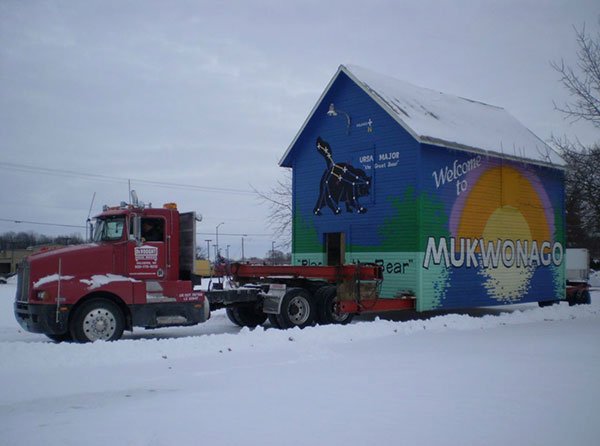The whole concept of relocating an actual building can be quite bizarre. That said, loading an entirely constructed building onto a truck and moving can be an expensive task, including the cost of the initial move and hiring a team of full-fledged contractors, technicians, and movers. In today’s article, we discuss six crucial factors that impact the cost of moving a building.
The Process of Relocating a Building
Moving a building is carried out in four crucial processes.
- The first step entails the preparation of the site you plan on relocating. This means terraforming the land to fit the dimensions of the building. The process entails surveying, soil testing, cutting down of trees, landscaping, and surface excavation.
- The second step involves building preparations, such as foundation construction and layouts. Depending on your buildings’s foundation’s structural integrity, you may require repair or a complete upgrade.
- Next, comes the big move; your building will be lifted from underneath the sills and relocated.
- From here, the team of contractors and movers will set up your building in its new location using hydraulic jacks, beams, and heavy machinery.
Six Factors That Impact the Cost of Moving a Building
Home relocation costs can range from as low as $15,000 to $300,000, considering things such as building dimensions, size, foundation, and permits. Below are the factors that determine the cost of relocating a building.
Factor #1: Shape and Size
The size of your building will significantly influence the cost of relocation. Wider buildings will require more time and effort to move than a 900 square foot building. With that said, the smaller the dimensions, the cheaper the costs of moving. More so, the shape of the building can also affect the price. Two buildings with similar dimensions but different shapes will not take the same time to move. This is because of the wings, angles, and protruding layers that influence their center of gravity. The movers will take additional measures to maintain balance to ensure that it doesn’t topple over, ultimately affecting the price.
Factor #2: Structure
Buildings come in different structures and frames, such as
- Double brick
- Terra-cotta tile
- Steel
- Masonry veneer
- Block
- Stone
- Concrete
Each structural type comes with its unique properties and weight distributions. Depending on the structure of your building, different techniques are implemented during the relocation process. The heavier the structure, the more workforce is needed to lift it off the ground.
Factor #3: Foundation
Foundation’s with a height of higher than 3 feet will require additional time to excavate debris and soil for the lifting steel to be planted. Taller foundations will end up costing more than shorter ones. On that note, buildings directly built upon a concrete slab floor will require more effort to lift. This can prove to be a costly venture compared to buildings sitting upon a rubble, stone, or wood pilings foundation.
Factor #4: Extra Accessories
Accessories, such as chimneys, garages, decks, patios, balconies, and fireplaces will be taken into account during the move. The more the accessories, the higher the costs of moving. However, relocating with accessories intact may be cheaper than singlehandedly extracting and installing each part piece by piece. You can also consider selling or tearing down accessories to save money.
Factor #5: Permits
Moving a building requires the relevant permits and certifications from your local state or country officials. The cost of obtaining a permit varies from state to state, with Vermont charging as low as $2500. Therefore, where you live will highly impact the cost of relocating your building.
Factor #6: Space
Insufficient working space can hinder the relocation process and increase the time it takes to get the job done. If the movers don’t have enough space to utilize, then it will affect their performance. This will also limit the amount of equipment they can carry to the site. Getting underneath the building and installing support frames or excavating the grounds will take much longer with small tools than the relevant heavy machinery needed for the task. While it will not affect the ability to move the building, it will only be costly due to the extra labor and time used.

